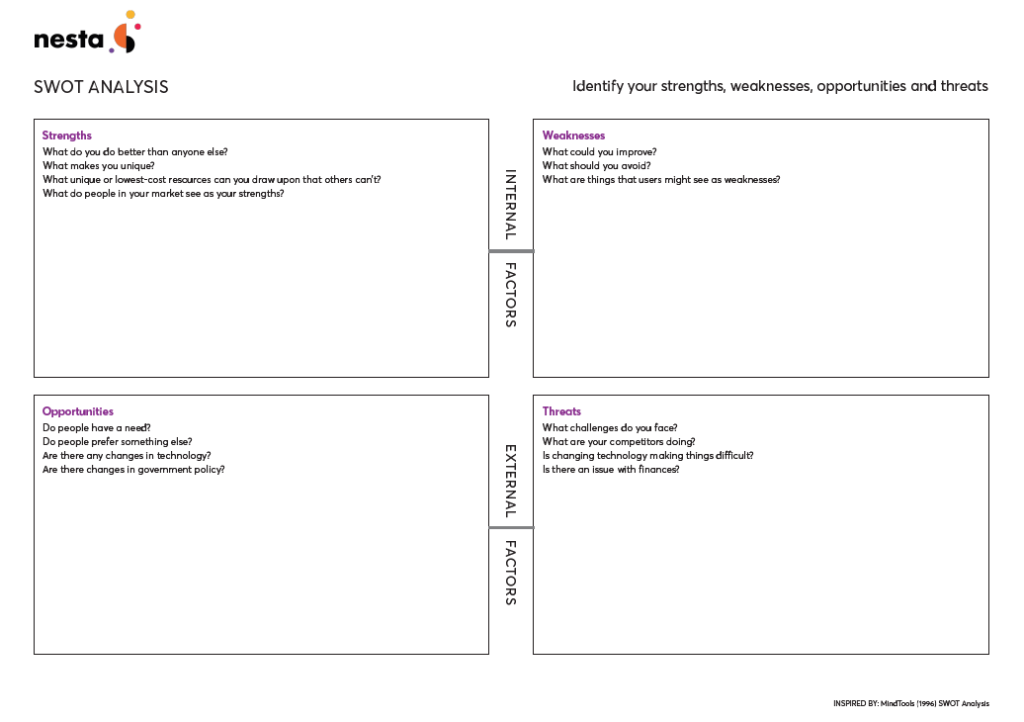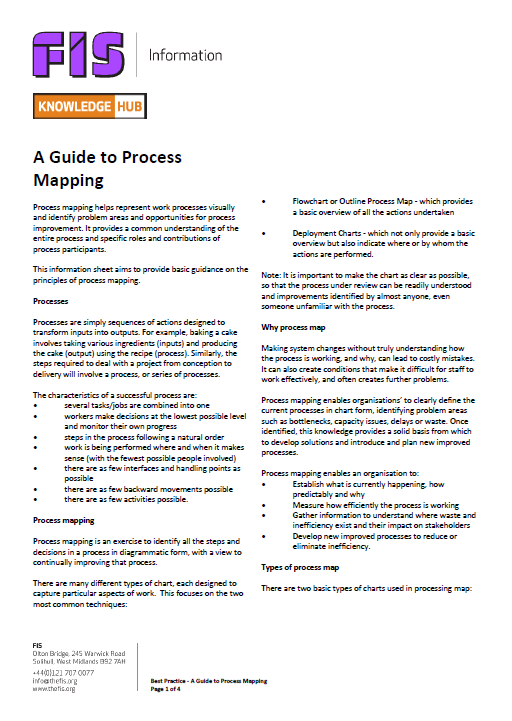SWOT Analysis (strengths, weaknesses, opportunities and threats) is a tried and tested tool for analysing a project, organisation or even an entire sector.
According to Nesta’s DIY Toolkit, carrying out a SWOT Analysis “leads to a richer understanding of what the project or organisation can offer, the key weaknesses that need to be worked upon in order to succeed, and where to bring in external partners for assistance.”
It can be used to generate useful insights at different levels (HQ or in-country) and with different challenges, ideas or timeframes in mind, and it is therefore a good framework for evaluating strategies or feeding into reflections on the initial impressions of a problem.
At in-country level strengths and weaknesses can change quickly over time and so a SWOT analysis could yield very different insights from an organisational perspective depending on where you are in the disaster management cycle.
For example, you may have significant funding (strength) in the response phase but insufficient numbers of skilled staff (weakness), whereas in the reconstruction phase you may see cuts in funding (threat) but increased political support for disaster risk reduction programming (opportunity).
Read the instructions provided on the DIY Toolkit website, download and print out the template as large as possible (or draw it onto a flipchart) and use sticky notes to map out the internal and external factors that are helping or hindering you in achieving your goals.

